【一】各种服务器的端口
- MySQL :3306
- Redis : 6379
- MongoDB : 27017
- Django : 8000
- flask : 5000
【二】MySQL数据库介绍
- MySQL是一个开源免费的关系型数据库管理系统,由瑞典MySQL AB 公司开发,目前属于 Oracle 旗下公司。
- MySQL 最流行的关系型数据库管理系统,在 WEB 应用方面MySQL是最好的 RDBMS (Relational Database Management System,关系数据库管理系统) 应用软件之一,
- 具有成本低、速度快、体积小且开放源代码等优点。
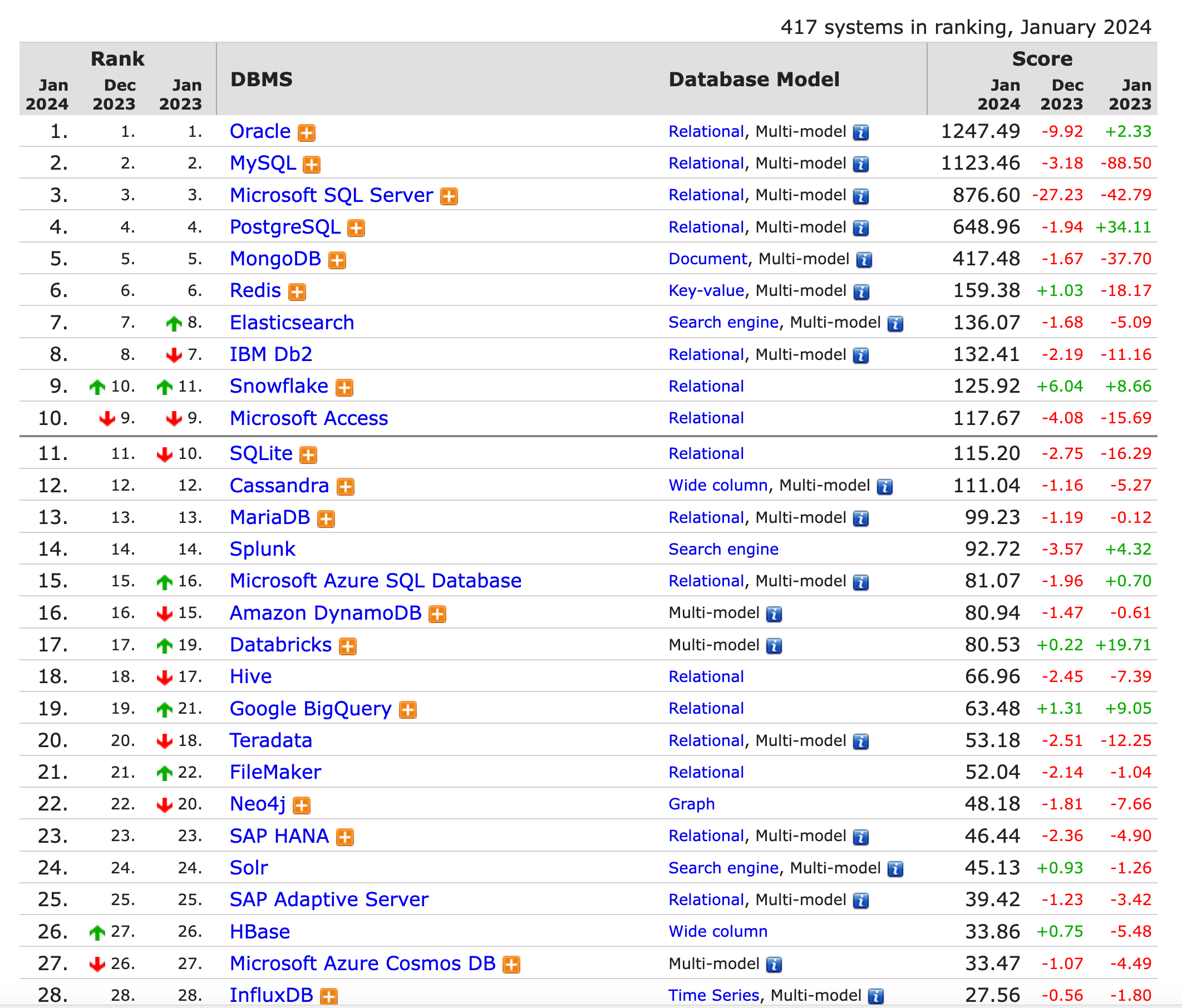
【三】MySQL安装(Windows)
【1】下载
(1)打开官网
- 打开网址,https://www.mysql.com
- 点击导航DOWNLOADS)
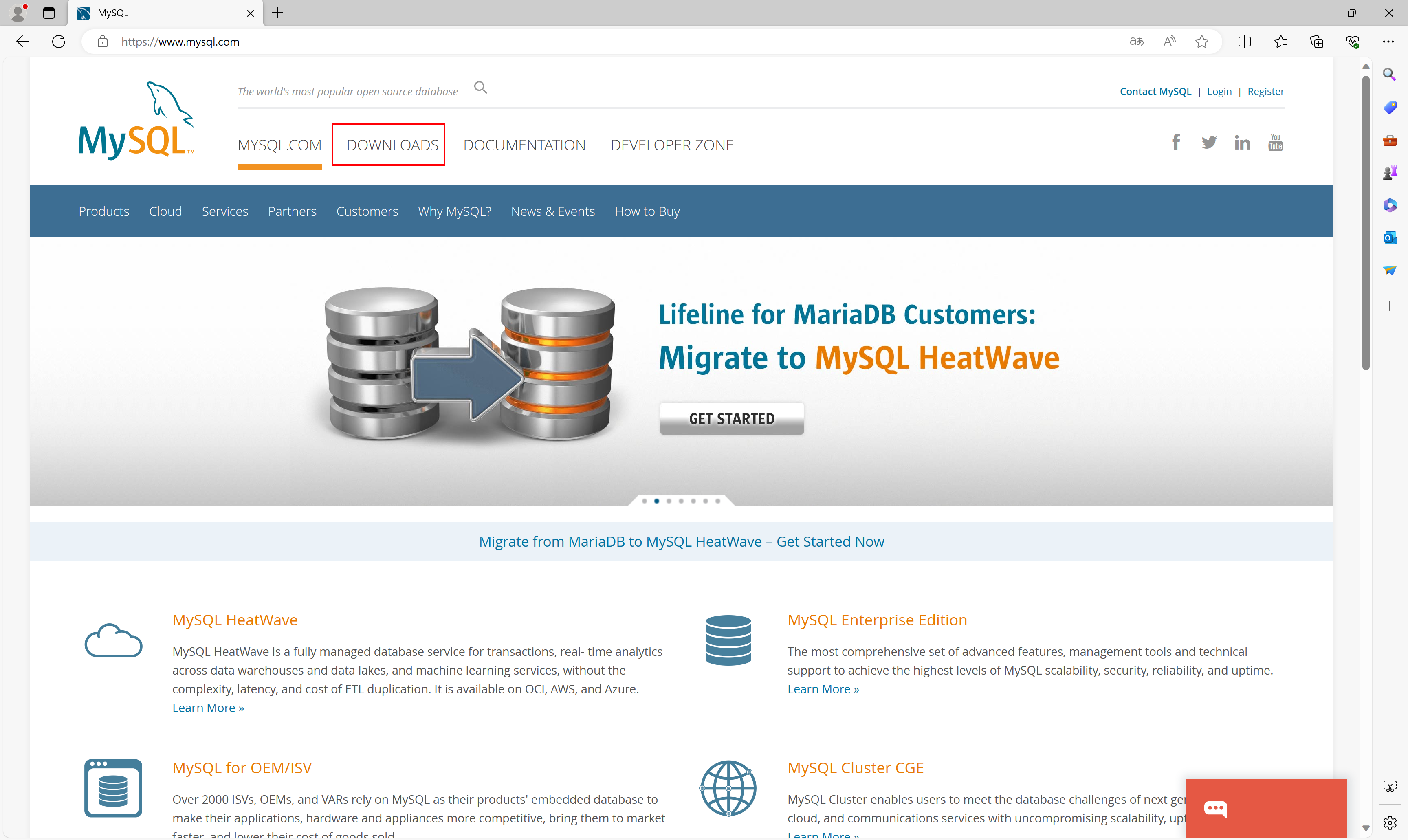
(2)选择MySQL Community
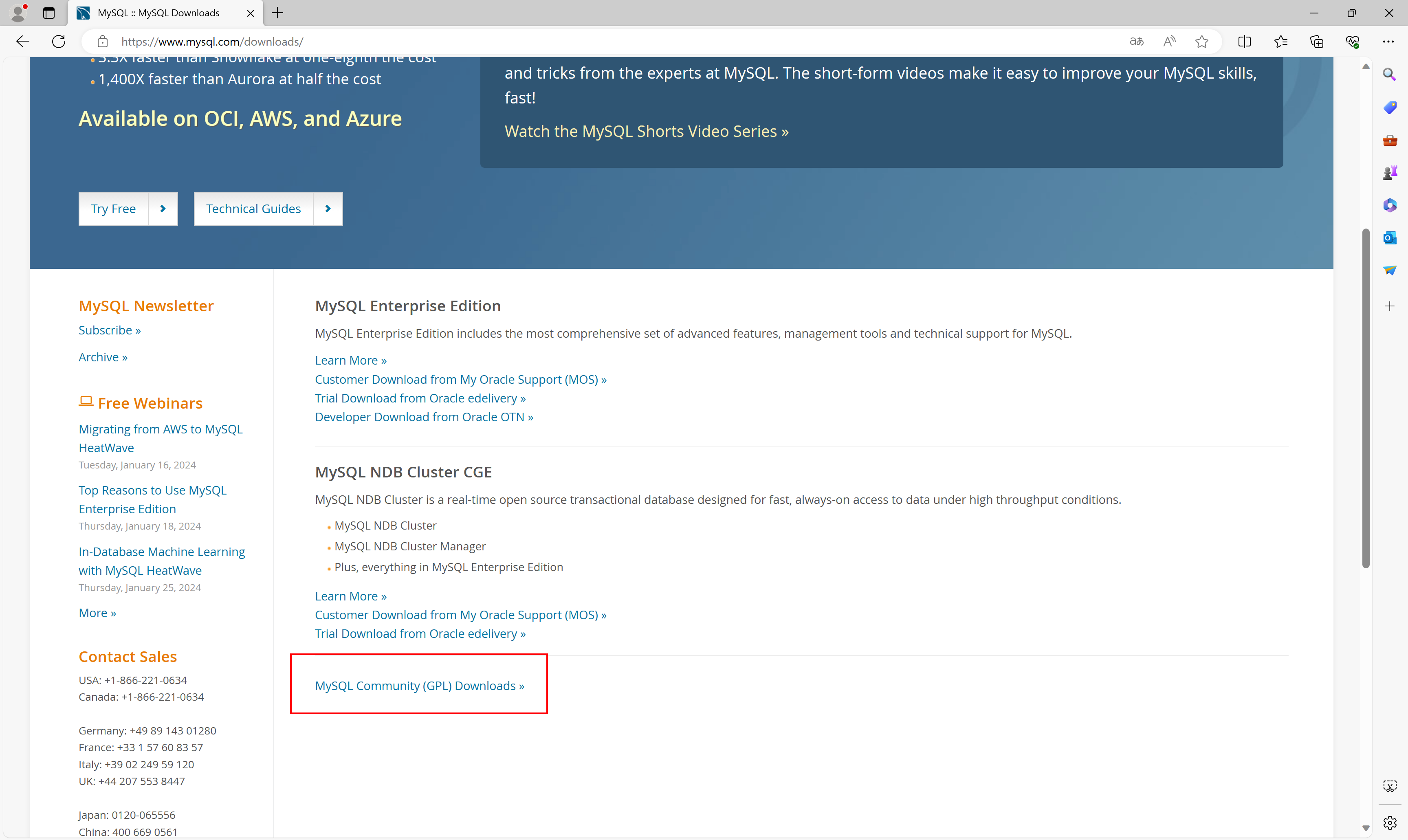
(3)选择MySQL Community Server

(4)选择版本

(5)开始下载
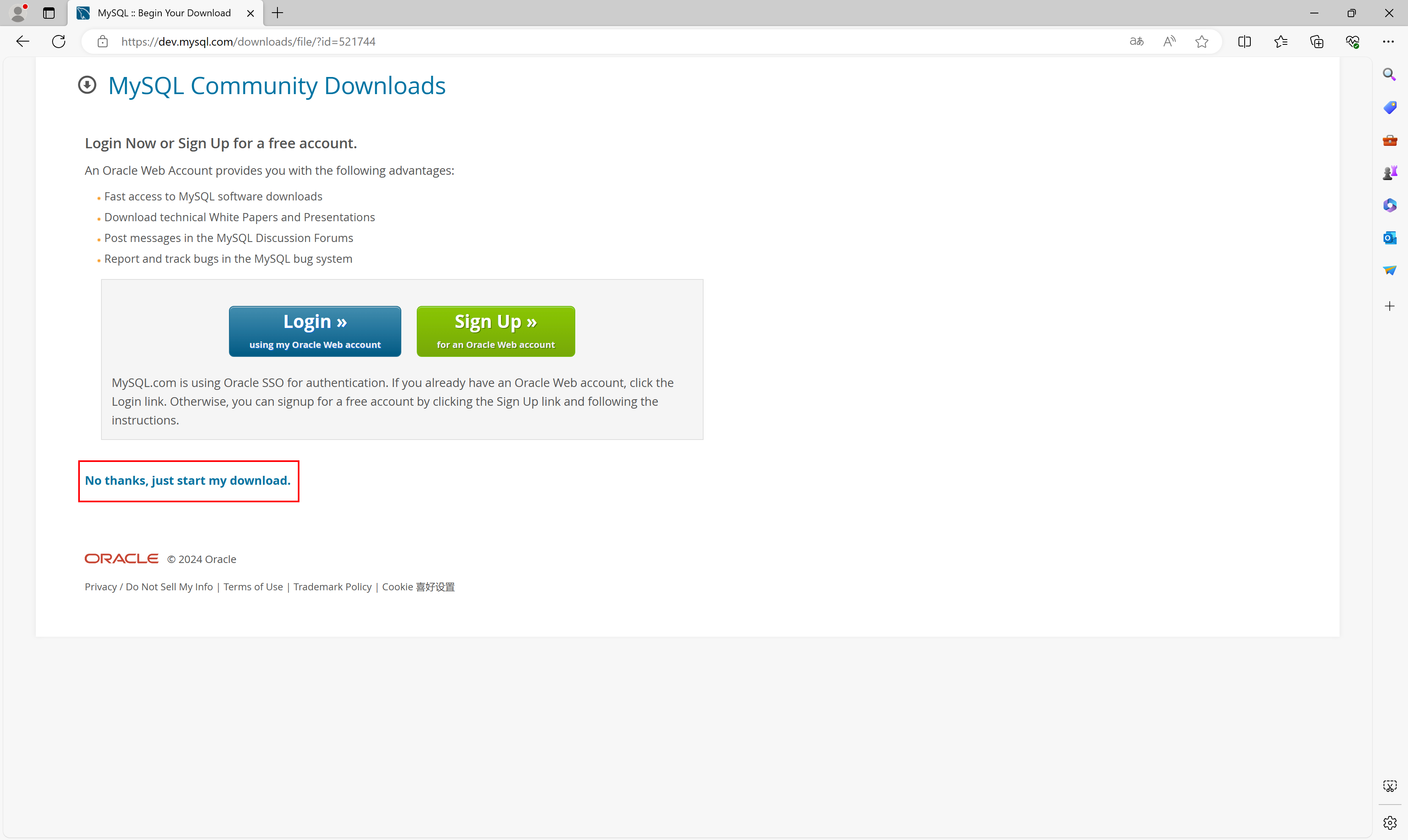
【2】解压文件
- 把下载到本地的zip文件手动解压,将解压之后的文件夹放到专门保存开发软件的目录下,这个目录就是mysql的安装目录。
- 注意,目录路径不能出现中文,不能出现空格等特殊符号,否则会出错的!!!
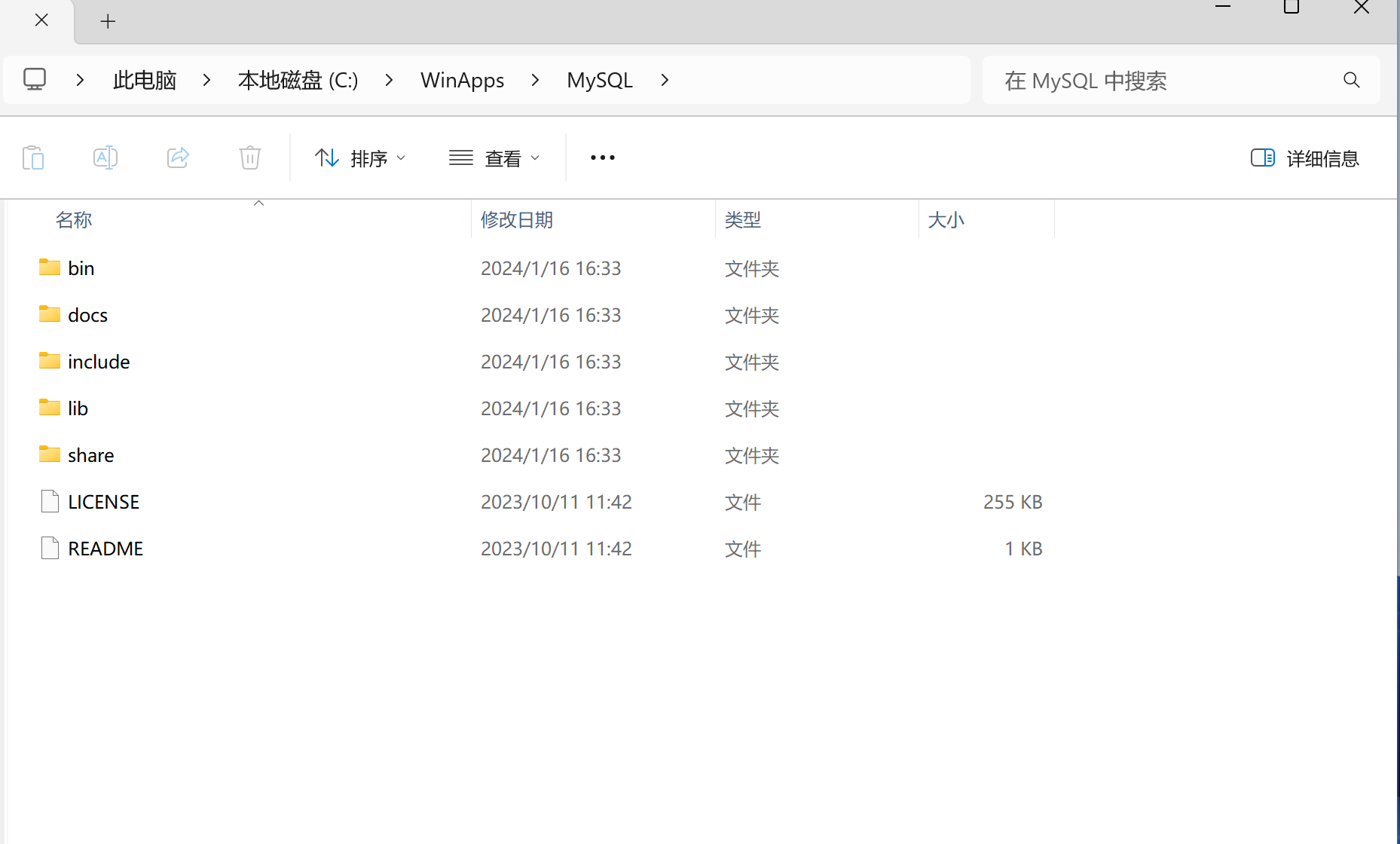
【3】配置环境变量
(1)打开设置

(2)打开环境变量

(3)编辑环境变量
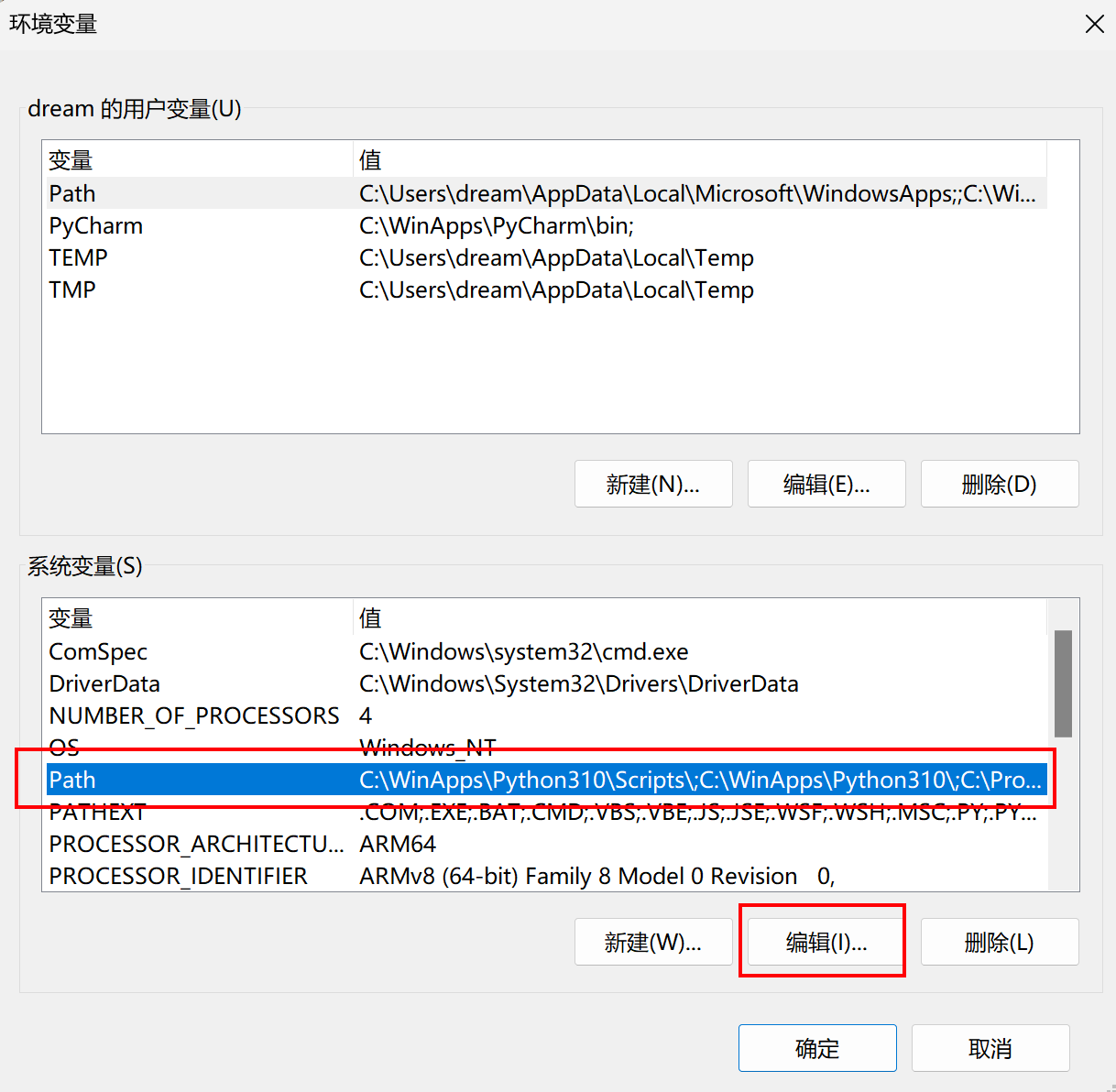
(4)添加环境变量
- 将MySQL的 bin 路径添加进去

【4】初始化准备工作
(1)创建data目录
- 主要用于存放mysql数据库以及数据的。
注意:是mysql的安装目录!!!!

(2)创建配置文件
-
mysql在windows下的配置文件,叫 my.ini,默认是没有的,我们需要手动创建。
-
配置文件内容如下
- 注意:basedir和datadir的路径要根据自己的路径如实填写
[mysqld]
# 设置3306端口
port=3306
# 设置mysql的安装目录
basedir="C:\WinApps\MySQL"
# 设置mysql数据库的数据的存放目录,就是前面手动创建的data目录
datadir="C:\WinApps\MySQL\data"
# 允许最大连接数
max_connections=200
# 允许连接失败的次数。
max_connect_errors=10
# 服务端使用的字符集默认为utf8mb4
character-set-server=utf8mb4
# 创建新表时将使用的默认存储引擎
default-storage-engine=INNODB
# 默认使用“mysql_native_password”插件认证, mysql_native_password
default_authentication_plugin=mysql_native_password
[mysql]
# 设置mysql网络通信的默认字符集
default-character-set=utf8mb4
[client]
# 设置mysql客户端连接服务端时默认使用的端口
port=3306
# 设置mysql客户端的默认字符集
default-character-set=utf8mb4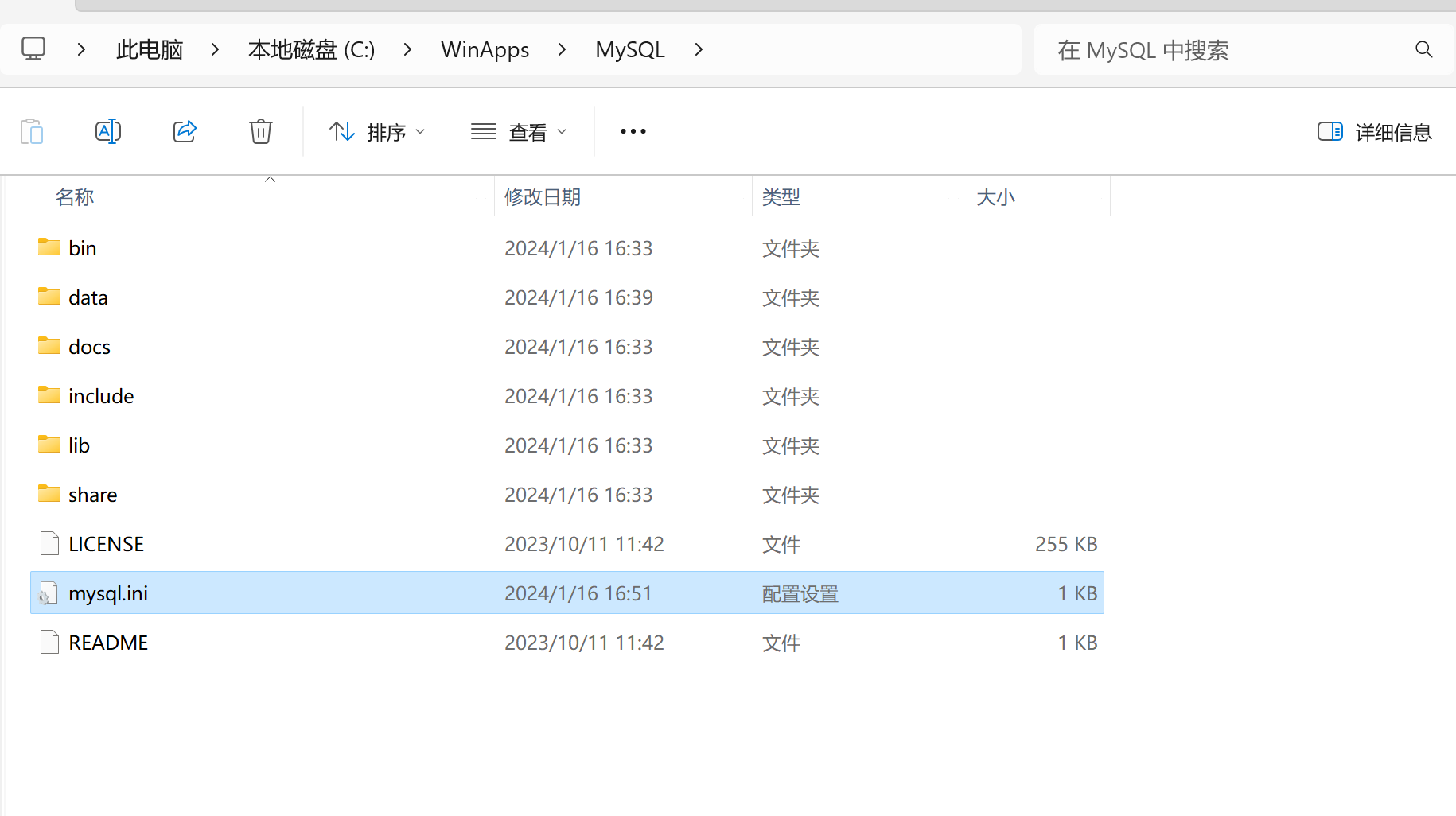
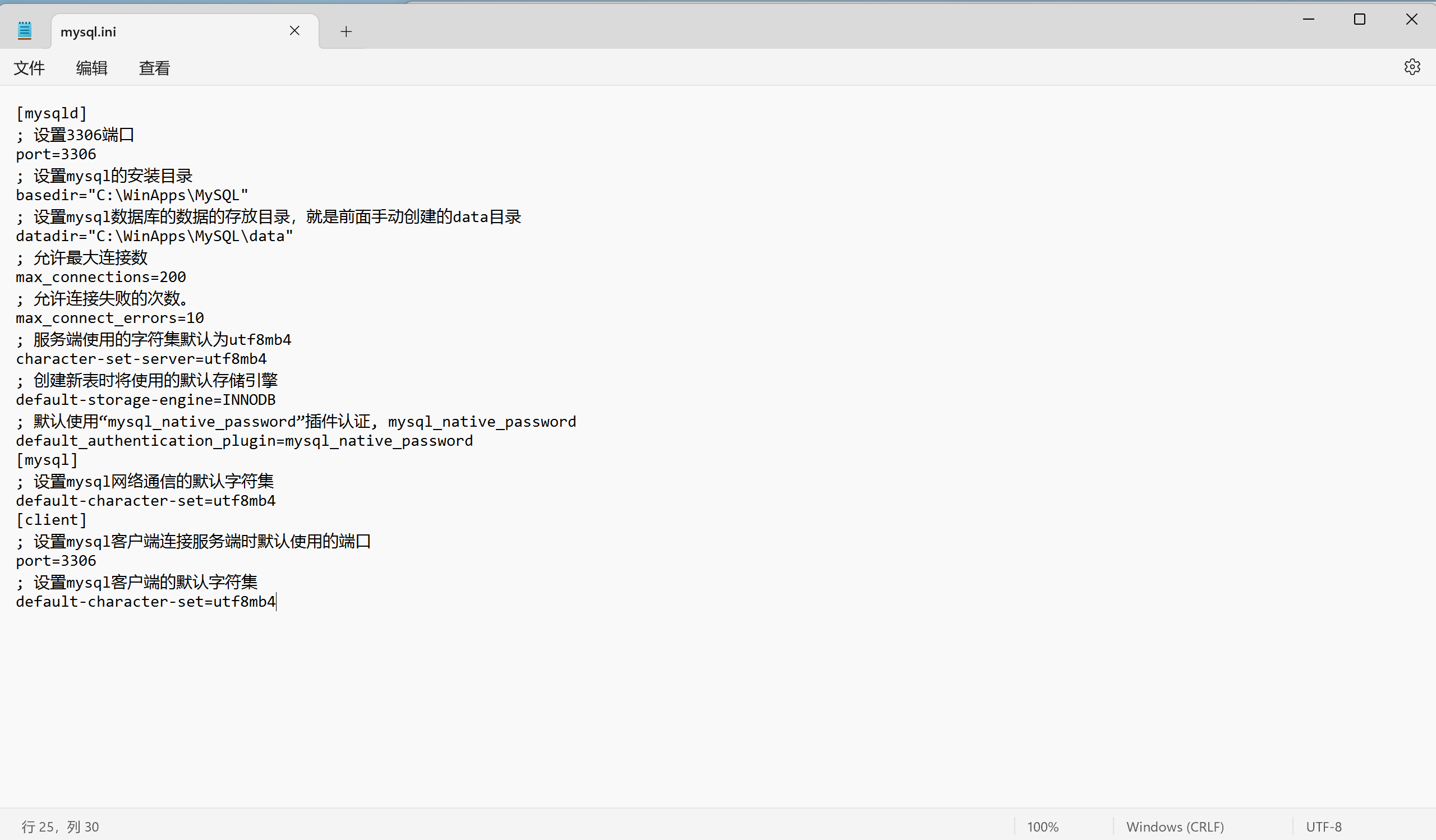
【5】初始化数据库
(1)打开cmd窗口

(2)执行初始化
- 输入以下命令,让数据库完成初始化操作。
mysqld --initialize --console
- 初始化成功结果如上,会自动生成一串随机的MySQL秘钥(一会有用)
【6】注册系统服务
(1)注册系统服务
- 把mysql注册到操作系统作为系统服务,保证将来电脑重启了就可以开机自启了
- 以管理员身份运行cmd窗口
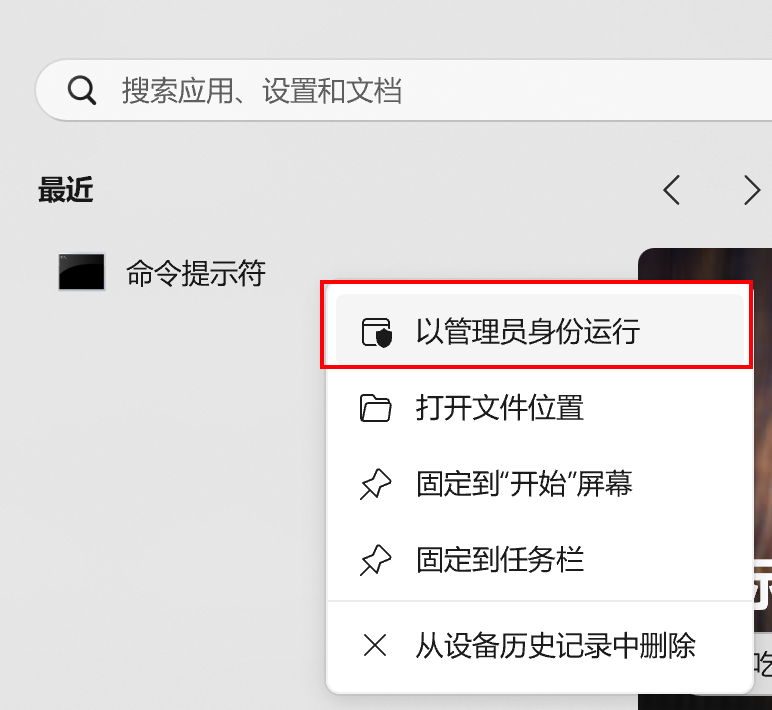
mysqld --install- 注册前是看不到MySQL系统服务的
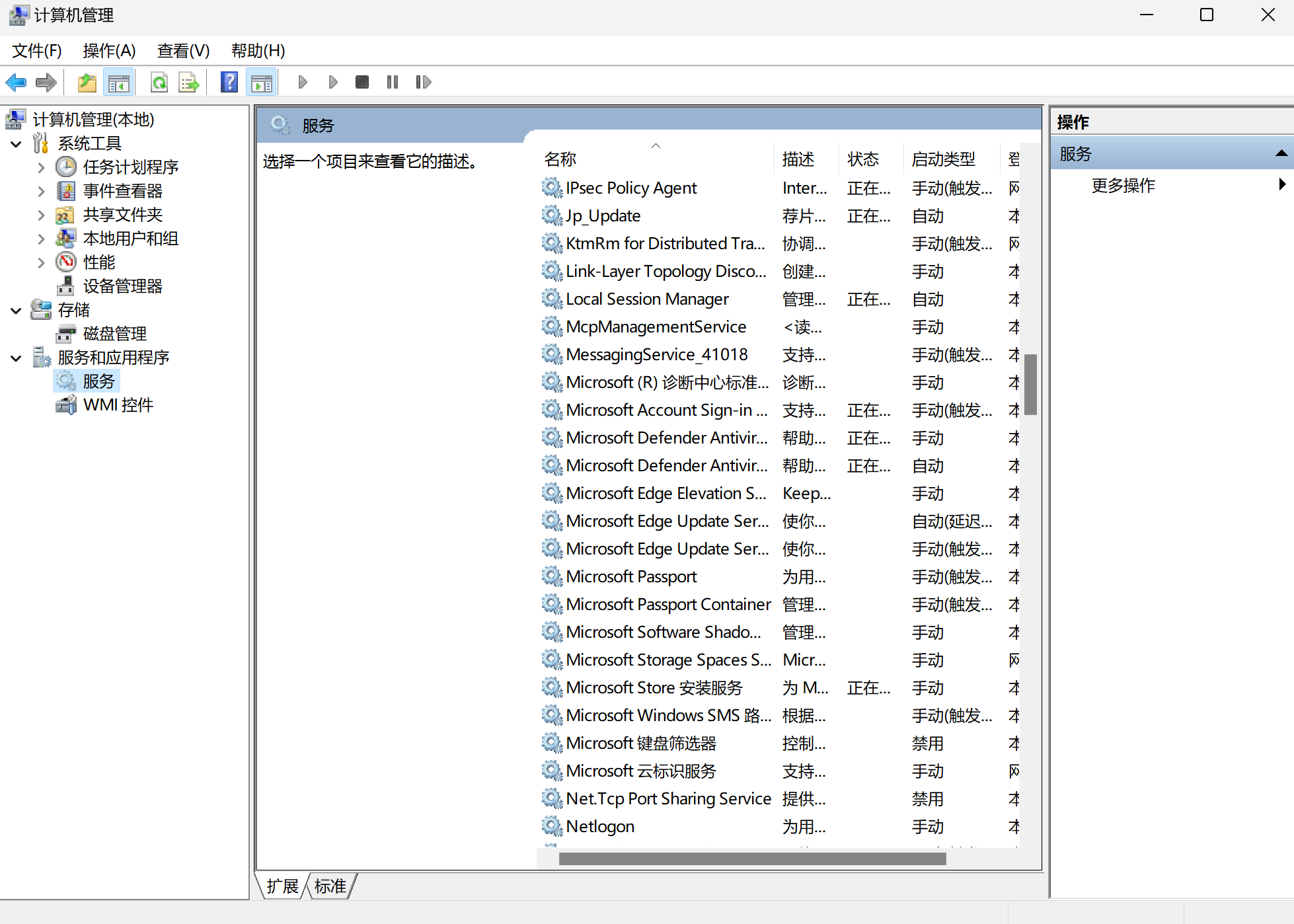
- 注册成功
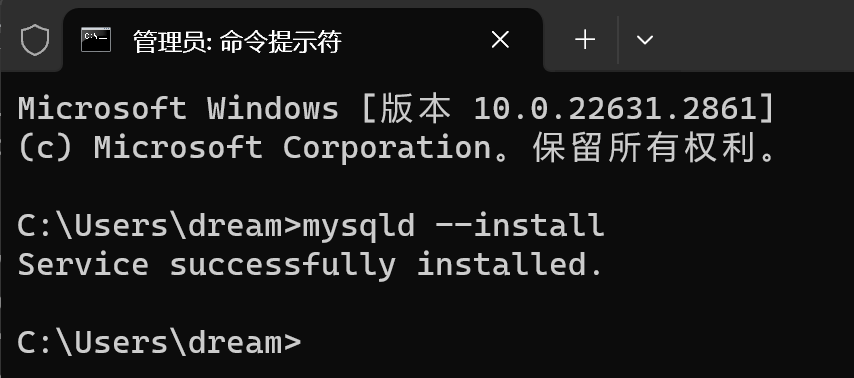
- 注册后的系统服务,多了一个MySQL服务
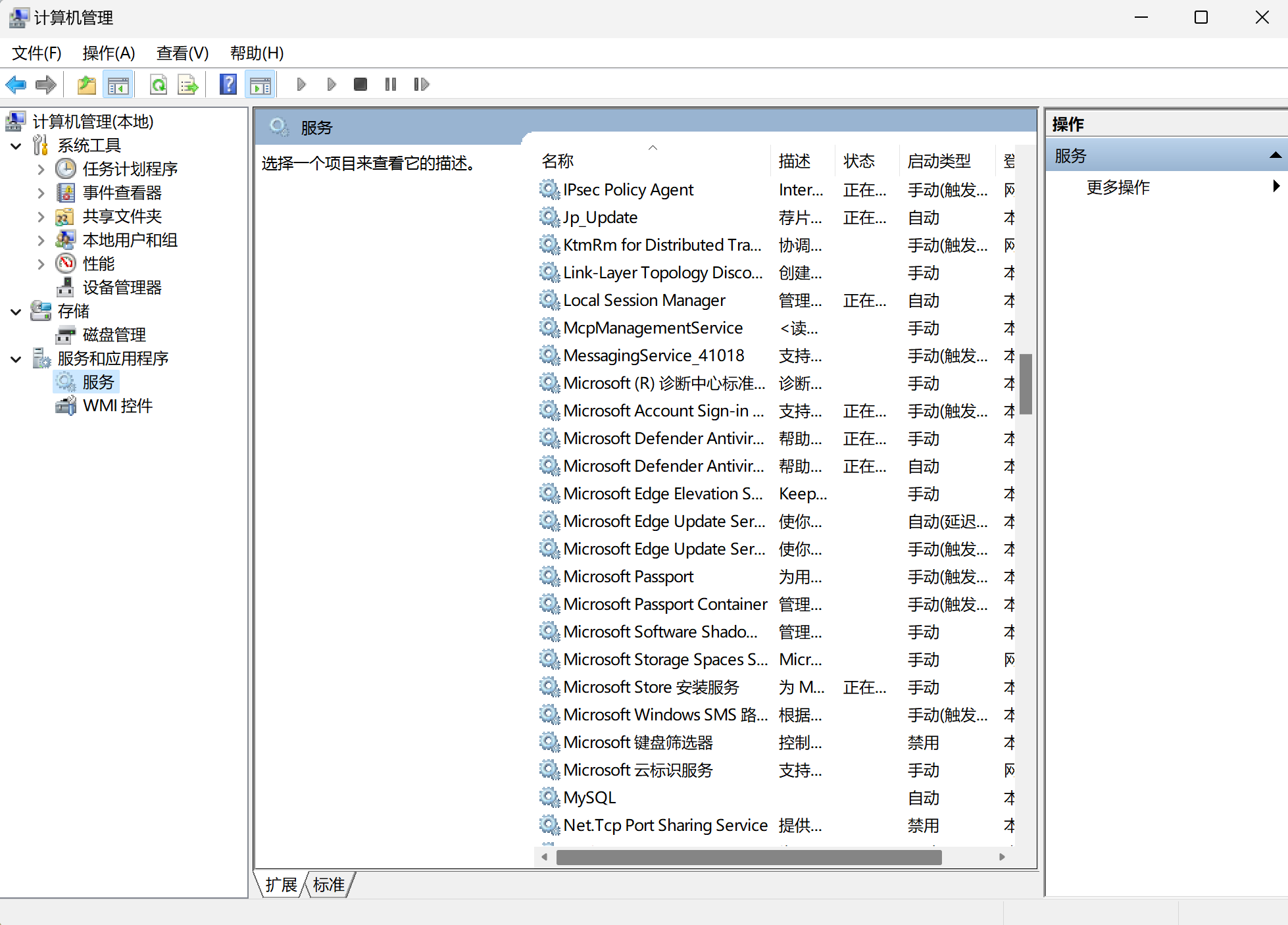
(2)注销系统服务
- 注销服务,用于卸载mysql的,别乱用。
mysqld --remove【7】启动MySQL服务
(1)方式一
- 直接在上述服务窗口右键启动
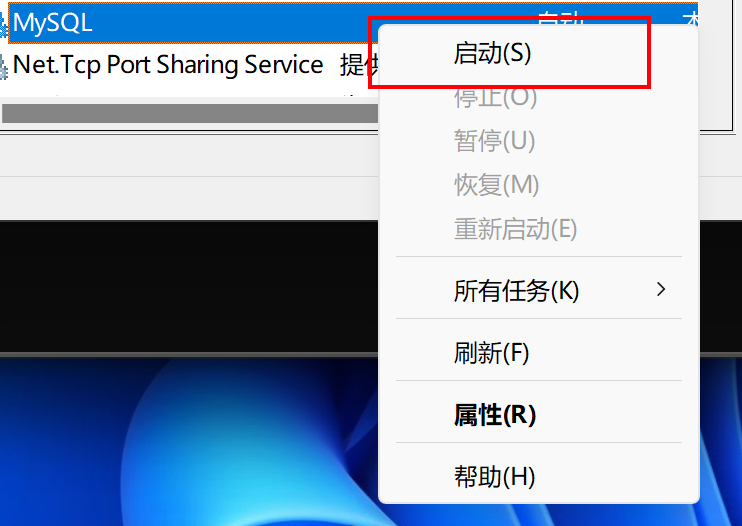
(2)方式二
- 启动
net start MySQL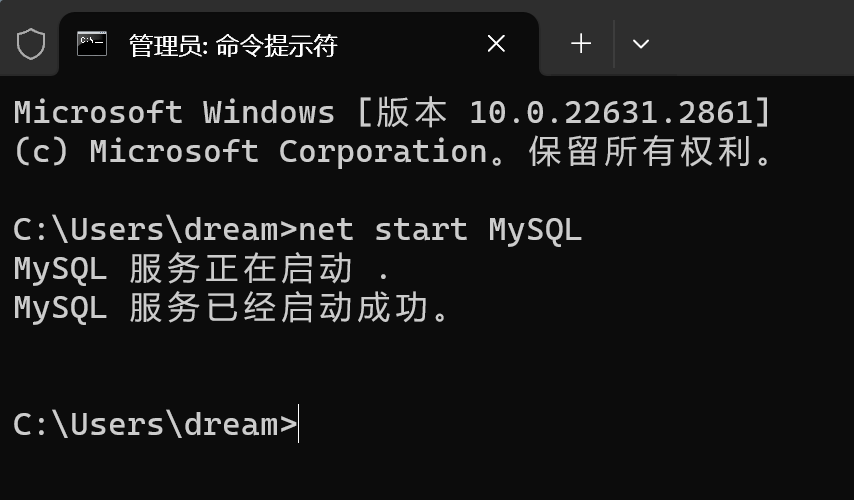
- 关闭
net stop MySQL- 重启
net start MySQL【四】MySQL安装(MacOS)
【1】下载
- MySQL :: Download MySQL Community Server (Archived Versions)
- 百度盘资源链接:https://pan.baidu.com/s/1x8BH9_dEn9hUgyIJXC7cIw?pwd=qaae
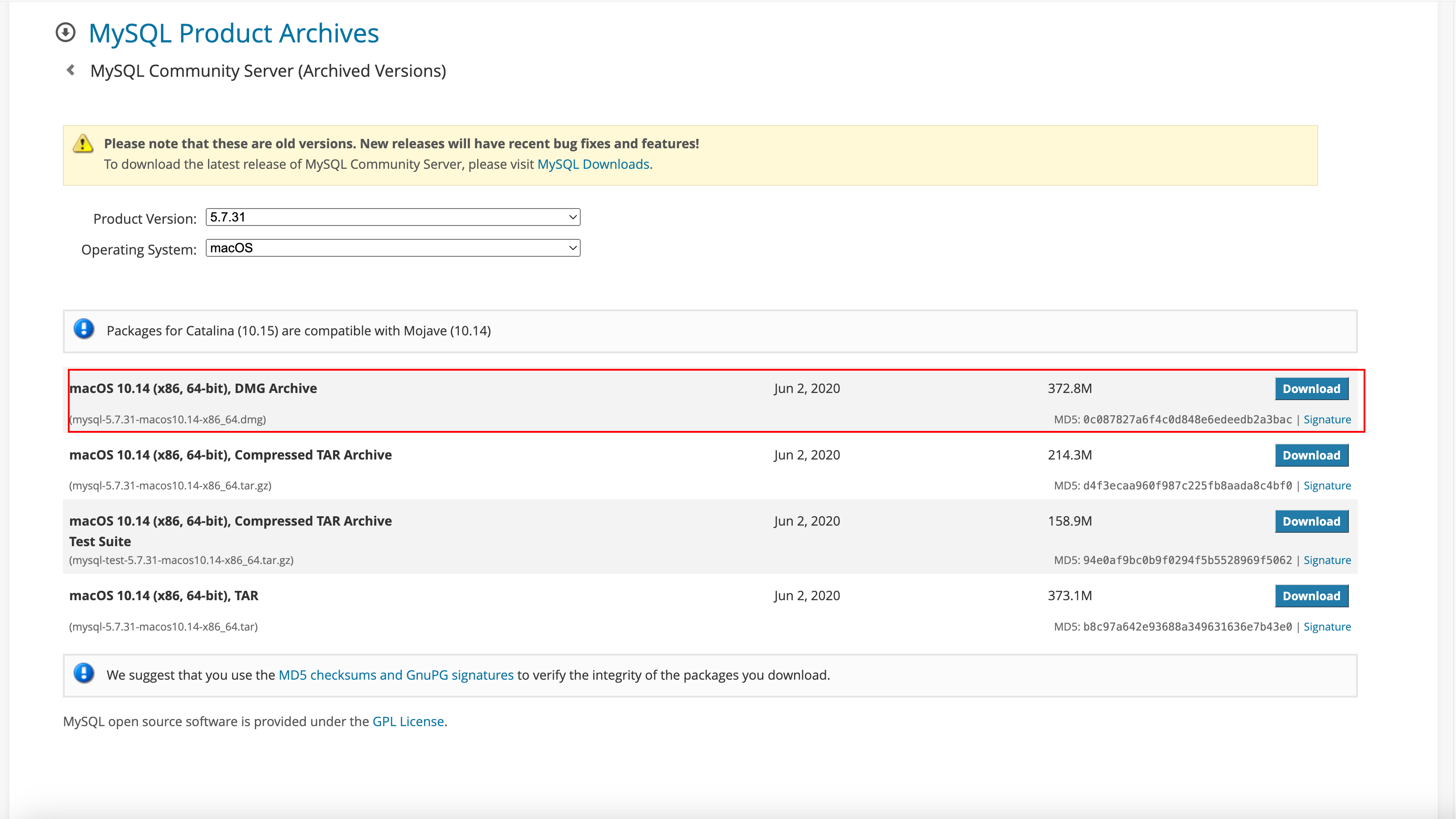
【2】安装
(1)双击安装器
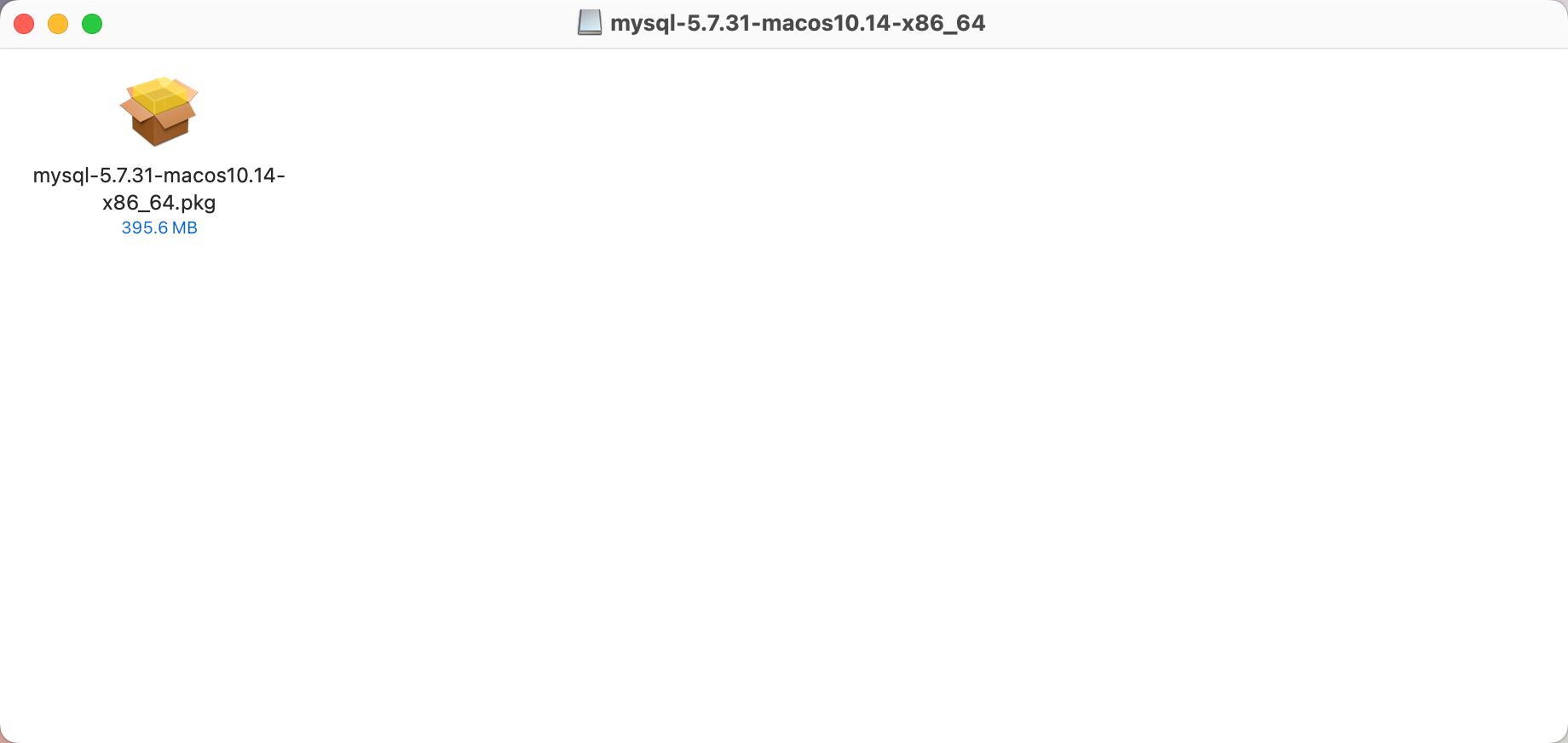
(2)继续

(3)继续

- 同意
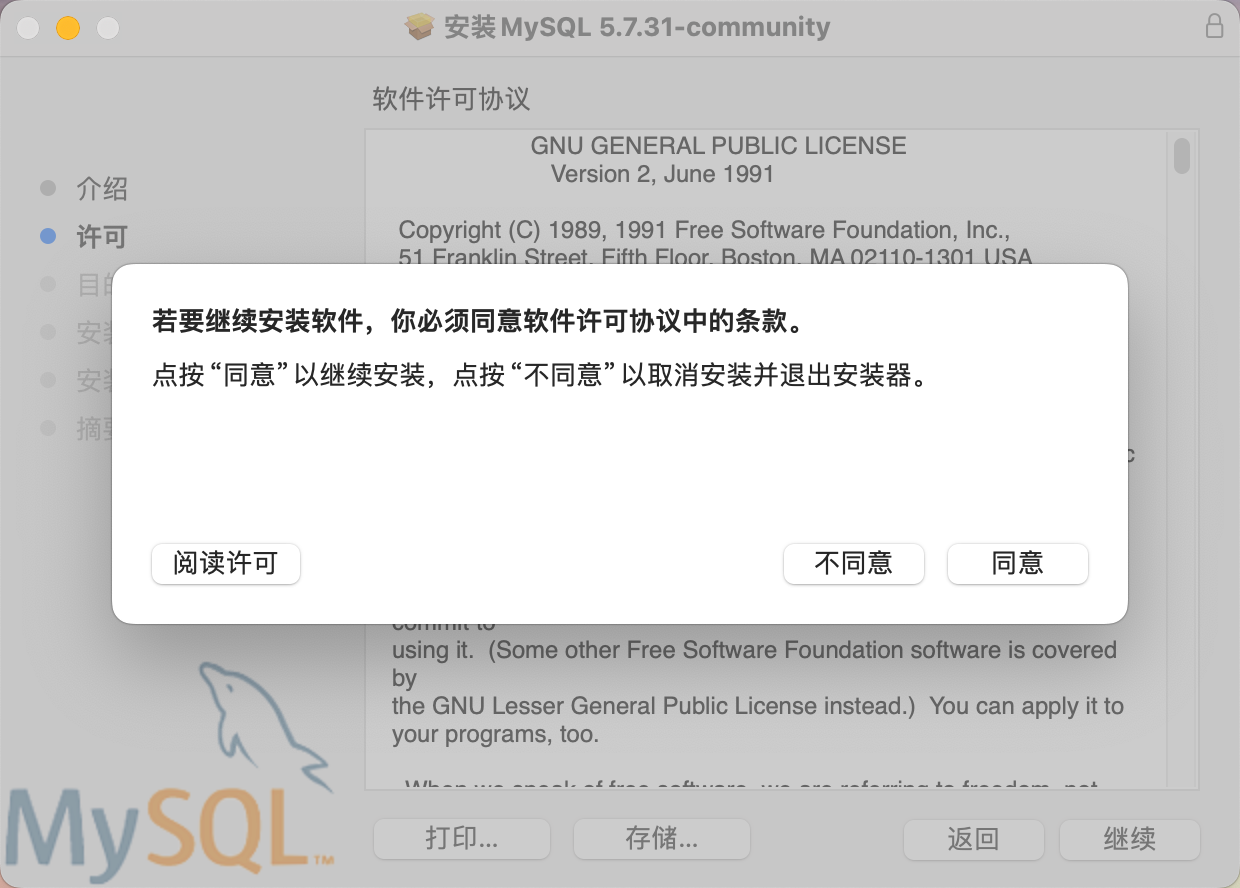
- 所有用户
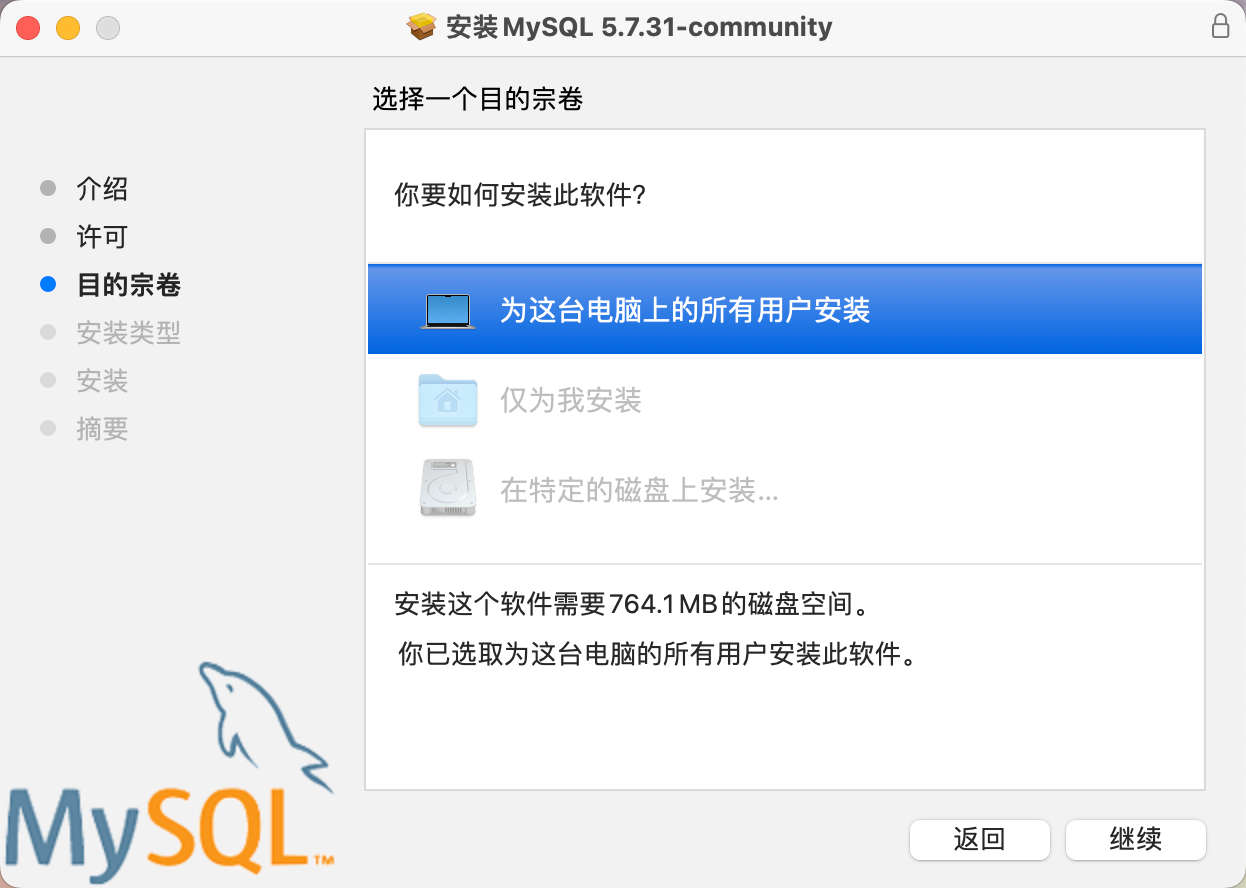
(4)安装

(5)安装成功
- 获取到一个随机的密码
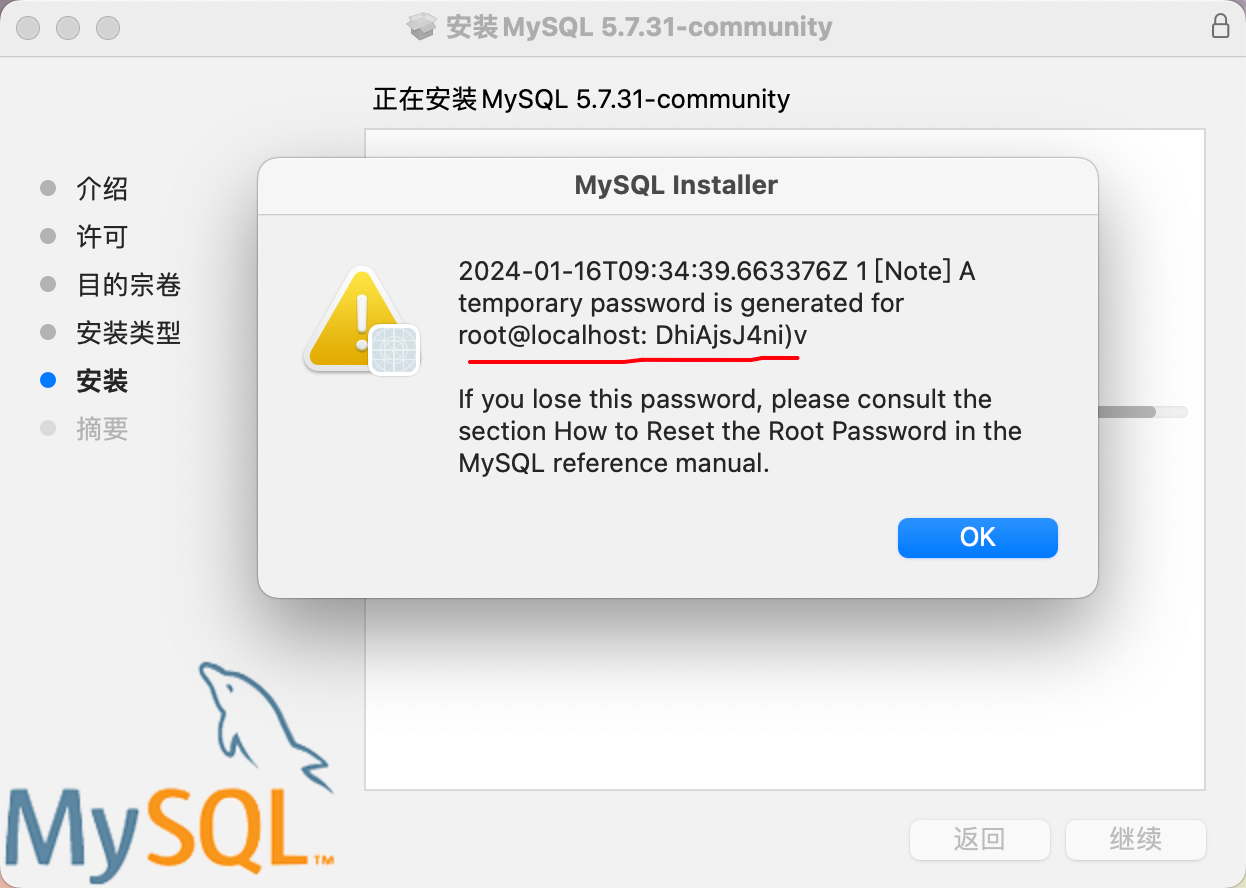
(6)关闭
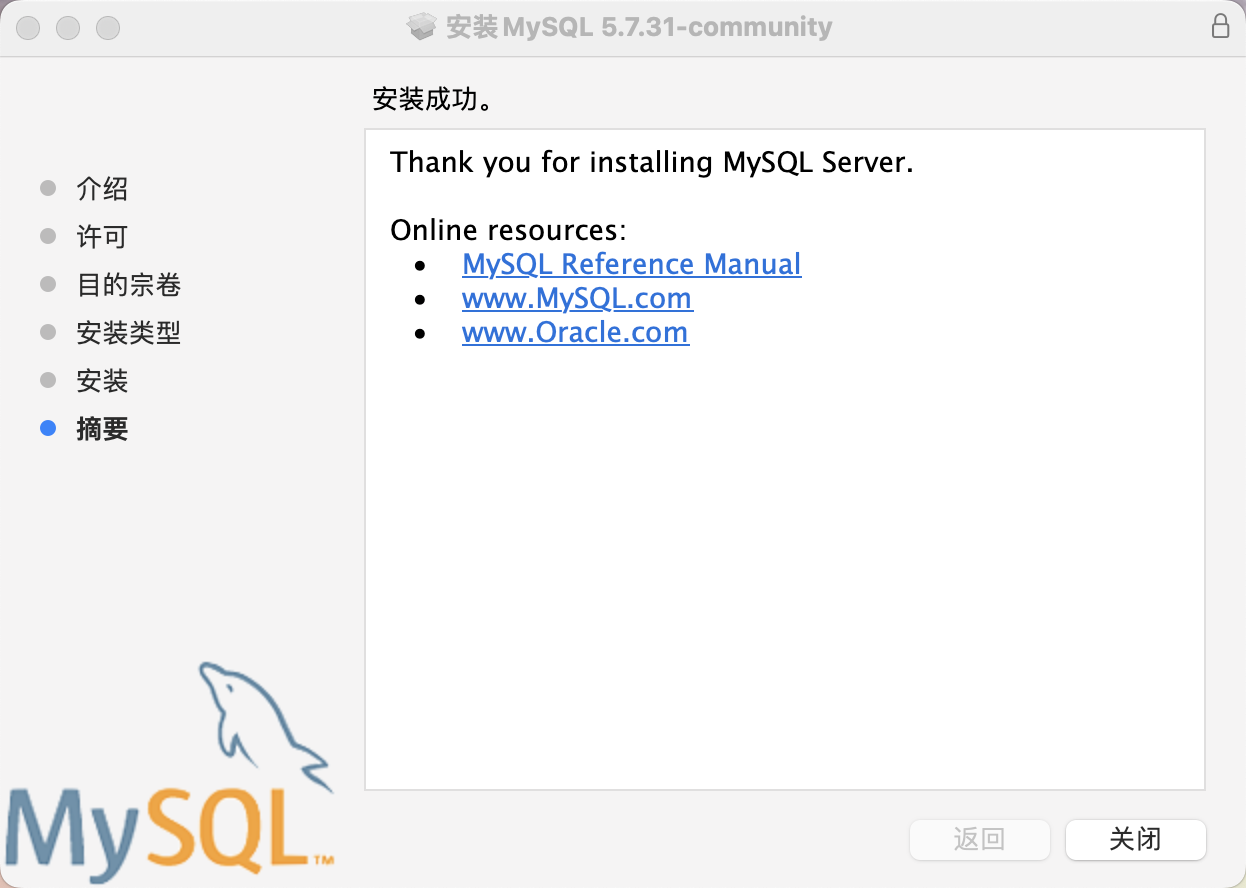
【3】启动MySQL
- 打开设置,启动MySQL
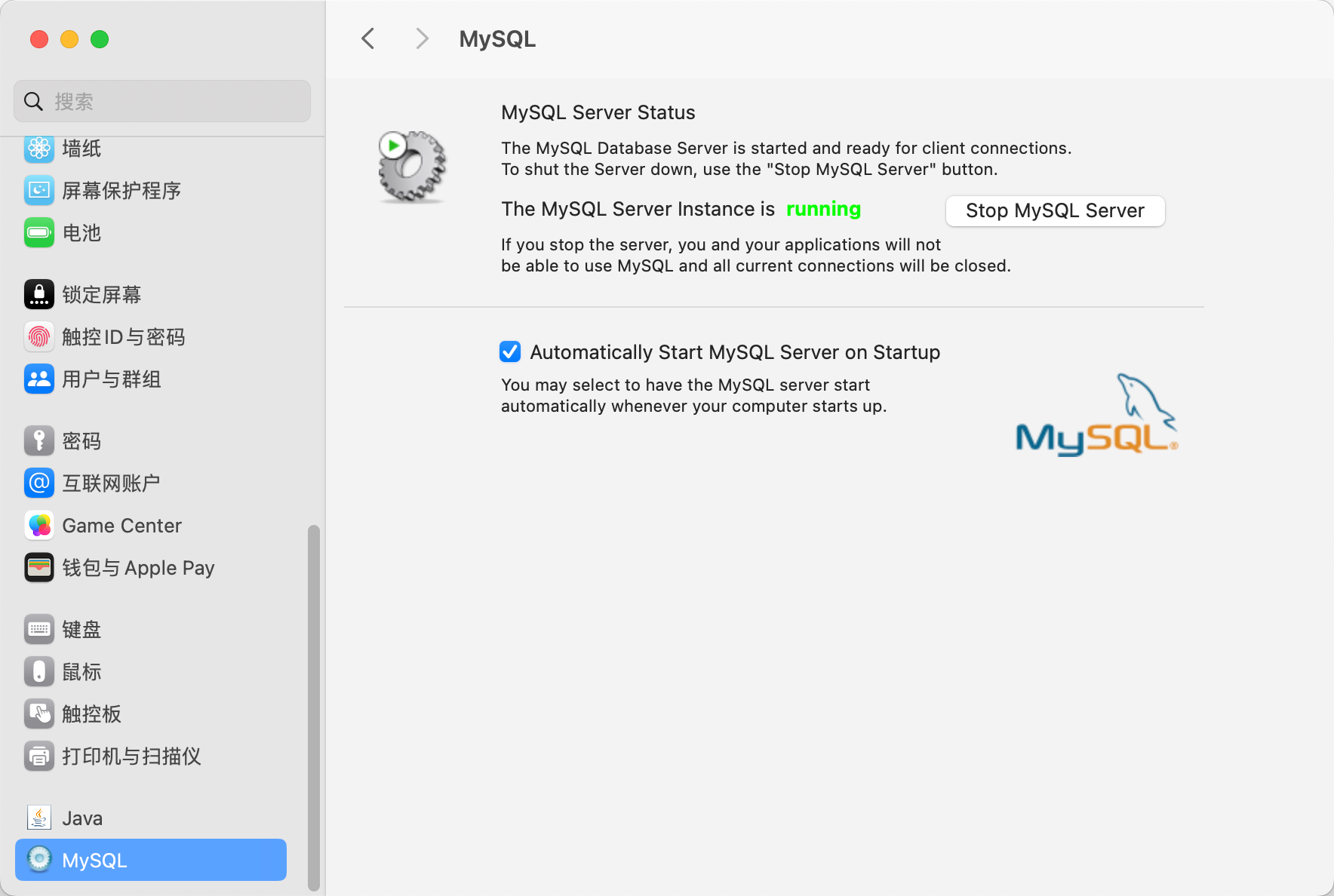
【4】配置mysql环境变量
(1)查看安装的MySQL位置
cd /usr/local/
ls
(2)配置环境变量
- 打开配置文件
open -e .bash_profile- 添加下面的配置内容
export PATH=/usr/local/bin:/usr/bin:/bin:/usr/sbin:/sbin
export PATH=${PATH}:/usr/local/mysql/bin- 打开配置文件
open -e ~/.zshrc- 追加下述配置
# MySQL environment variables
export MYSQL_HOME=/usr/local/mysql
export PATH=$MYSQL_HOME/bin:$PATH
export PATH=$MYSQL_HOME/usr/libexec:$PATH
export LD_LIBRARY_PATH=$MYSQL_HOME/lib:$LD_LIBRARY_PATH【5】配置mysql配置文件
- 无论是homebrew等方式,在Mac下都是不会生成my.cnf文件,因为已经使用了最优默认值
- 如果需要也可以自行新建或配置/etc/my.cnf
(1)查看my.cnf的加载顺序
mysql --verbose --help | grep my.cnf
- 默认安装位置
/usr/local/mysql
(2)示例文件
- 一般情况下/usr/local/mysql/support-files/下不会有示例文件,如果有可以执行以下命令
cd /usr/local/mysql/support-files/
sudo cp my-huge.cnf /etc/my.cnf- 如果没有,也可以手动创建my.cnf文件
sudo vim /etc/my.cnf- 阉割版配置文件
# For advice on how to change settings please see
# http://dev.mysql.com/doc/refman/5.6/en/server-configuration-defaults.html
# *** DO NOT EDIT THIS FILE. It's a template which will be copied to the
# *** default location during install, and will be replaced if you
# *** upgrade to a newer version of MySQL.
[mysqld]
# Remove leading # and set to the amount of RAM for the most important data
# cache in MySQL. Start at 70% of total RAM for dedicated server, else 10%.
# innodb_buffer_pool_size = 128M
# Remove leading # to turn on a very important data integrity option: logging
# changes to the binary log between backups.
# log_bin
# These are commonly set, remove the # and set as required.
# basedir = .....
# datadir = .....
# port = .....
# server_id = .....
# socket = .....
#服务端口号 默认3306
port = 3306
server_id = 1
# mysql安装根目录
basedir = /usr/local/mysql
# mysql数据文件所在位置
datadir = /usr/local/mysql/data
# 跳过密码登录
skip-grant-tables
# 数据库默认字符集,主流字符集支持一些特殊表情符号(特殊表情符占用4个字节)
character-set-server = utf8mb4
# 数据库字符集对应一些排序等规则,注意要和character-set-server对应
collation-server = utf8mb4_general_ci
# 设置client连接mysql时的字符集,防止乱码
init_connect='SET NAMES utf8mb4'
# 是否对sql语句大小写敏感,1表示不敏感,8.0需要在初始化时候设置
# lower_case_table_names = 1
# 最大连接数
max_connections = 1000
#最大错误连接数
max_connect_errors = 1200
# wait_timeout = 1814400
# Remove leading # to set options mainly useful for reporting servers.
# The server defaults are faster for transactions and fast SELECTs.
# Adjust sizes as needed, experiment to find the optimal values.
# join_buffer_size = 128M
# sort_buffer_size = 2M
# read_rnd_buffer_size = 2M
[client]
default-character-set=utf8
[mysql]
# 不需要每次输入验证码即可登陆
user="root"
password="1314521"
default-character-set=utf8mb4- 完整版配置文件
#
# FromDual configuration file template for MySQL, Galera Cluster, MariaDB and Percona Server
# Location: %MYCNF%
# This template is intended to work with MySQL 5.7 and newer and MariaDB 10.0 and newer
# Get most recent updated from here:
# https://www.fromdual.com/mysql-configuration-file-sample
#
[client]
port = %PORT% # default 3306
socket = %SOCKET% # Use mysqld.sock on Ubuntu, conflicts with AppArmor otherwise
[mysql]
no_auto_rehash
max_allowed_packet = 16M
prompt = '\u@\h [\d]> ' # 'user@host [schema]> '
default_character_set = utf8 # Possibly this setting is correct for most recent Linux systems
[mysqldump]
max_allowed_packet = 16M
[mysqld_safe] # Becomes sooner or later obsolete with systemd
open_files_limit = 8192 # You possibly have to adapt your O/S settings as well
user = mysql
log-error = %INSTANCEDIR%/log/%UNAME%_%INSTANCE%_error.log # Adjust AppArmor configuration: /etc/apparmor.d/local/usr.sbin.mysqld
[mysqld]
# Connection and Thread variables
port = %PORT% # default 3306
socket = %SOCKET% # Use mysqld.sock on Ubuntu, conflicts with AppArmor otherwise
basedir = %BASEDIR%
datadir = %DATADIR%
# tmpdir = '%INSTANCEDIR%/tmp'
# innodb_tmpdir = '%INSTANCEDIR%/tmp' # MySQL 5.7
max_allowed_packet = 16M
default_storage_engine = InnoDB
# explicit_defaults_for_timestamp = 1 # MySQL 5.6, test carefully! This can have an impact on application.
# disable_partition_engine_check = true # Since MySQL 5.7.17 to 5.7.20. To get rid of nasty message in error log
# character_set_server = utf8mb4 # For modern applications, default in MySQL 8.0
# collation_server = utf8mb4_general_ci
max_connections = 151 # Values < 1000 are typically good
max_user_connections = 145 # Limit one specific user/application
thread_cache_size = 151 # Up to max_connections makes sense
# Query Cache (does not exist in MySQL 8.0 any more!)
# query_cache_type = 1 # Set to 0 to avoid global QC Mutex
# query_cache_size = 32M # Avoid too big (> 128M) QC because of QC clean-up lock!
# Session variables
sort_buffer_size = 2M # Could be too big for many small sorts
tmp_table_size = 32M # Make sure your temporary results do NOT contain BLOB/TEXT attributes
read_buffer_size = 128k # Resist to change this parameter if you do not know what you are doing
read_rnd_buffer_size = 256k # Resist to change this parameter if you do not know what you are doing
join_buffer_size = 128k # Resist to change this parameter if you do not know what you are doing
# Other buffers and caches
table_definition_cache = 1400 # As big as many tables you have
table_open_cache = 2000 # connections x tables/connection (~2)
table_open_cache_instances = 16 # New default in 5.7
# MySQL error log
log_error = %INSTANCEDIR%/log/%UNAME%_%INSTANCE%_error.log # Adjust AppArmor configuration: /etc/apparmor.d/local/usr.sbin.mysqld
# log_timestamps = SYSTEM # MySQL 5.7, equivalent to old behaviour
log_warnings = 2 # MySQL 5.6, equivalent to log_error_verbosity = 3
# log_error_verbosity = 3 # MySQL 5.7, equivalent to log_warnings = 2, MariaDB does NOT support this!
innodb_print_all_deadlocks = 1
# wsrep_log_conflicts = 1 # for Galera only!
# Slow Query Log
slow_query_log_file = %INSTANCEDIR%/log/%UNAME%_%INSTANCE%_slow.log # Adjust AppArmor configuration: /etc/apparmor.d/local/usr.sbin.mysqld
slow_query_log = 0
log_queries_not_using_indexes = 0 # Interesting on developer systems!
long_query_time = 0.5
min_examined_row_limit = 100
# General Query Log
general_log_file = %INSTANCEDIR%/log/%UNAME%_%INSTANCE%_general.log # Adjust AppArmor configuration: /etc/apparmor.d/local/usr.sbin.mysqld
general_log = 0
# Performance Schema
# performance_schema = ON # for MariaDB 10 releases
performance_schema_consumer_events_statements_history_long = ON # MySQL 5.6/MariaDB 10 and newer
# Binary logging and Replication
server_id = %SERVERID% # Must be set on MySQL 5.7 and newer if binary log is enabled!
log_bin = %INSTANCEDIR%/binlog/%UNAME%_%INSTANCE%_binlog # Locate outside of datadir, adjust AppArmor configuration: /etc/apparmor.d/local/usr.sbin.mysqld
# master_verify_checksum = ON # MySQL 5.6
binlog_cache_size = 1M
binlog_stmt_cache_size = 1M
max_binlog_size = 128M # Make bigger for high traffic to reduce number of files
sync_binlog = 1 # Set to 0 or higher to increase write performance
expire_logs_days = 5 # We will survive easter holidays
binlog_format = ROW # Use MIXED if you want to experience some troubles
# binlog_row_image = MINIMAL # Since 5.6
# auto_increment_increment = 2 # For Master/Master set-ups use 2 for both nodes
# auto_increment_offset = 1 # For Master/Master set-ups use 1 and 2
# Slave variables
log_slave_updates = 1 # Use if Slave is used for Backup and PiTR
read_only = 0 # Set to 1 to prevent writes on Slave
# super_read_only = 0 # Set to 1 to prevent writes on Slave for users with SUPER privilege. Since 5.7, not in MariaDB
# skip_slave_start = 1 # To avoid start of Slave thread
# relay_log = %UNAME%_%INSTANCE%_relay-bin
# relay_log_info_repository = table # MySQL 5.6
# master_info_repository = table # MySQL 5.6
# slave_load_tmpdir = '%INSTANCEDIR%/tmp'
# Crash-safe replication Master
# binlog_checksum = CRC32 # default
# sync_binlog = 1 # default since 5.7.6, but slow!
# innodb_support_xa = 1 # default, depracted since 5.7.10
# Crash-safe replication Slave
# master_info_repository = TABLE
# relay_log_info_repository = TABLE
# relay_log_recovery = 1
# sync_relay_log_info = 1
# relay_log_purge = 1 # default
# slave_sql_verify_checksum = 1 # default
# GTID replication
# gtid_mode = ON # Master and Slave
# enforce_gtid_consistency = 1 # Master and Slave
# log_bin = %INSTANCEDIR%/binlog/%UNAME%_%INSTANCE%_binlog # In 5.6 also on Slave
# log_slave_updates = 1 # In 5.6 also on Slave
# Security variables
# local_infile = 0 # If you are security aware
# secure_auth = 1 # If you are security aware
# sql_mode = TRADITIONAL,ONLY_FULL_GROUP_BY,NO_ENGINE_SUBSTITUTION,STRICT_ALL_TABLES,NO_ZERO_IN_DATE,NO_ZERO_DATE,ERROR_FOR_DIVISION_BY_ZERO,NO_AUTO_CREATE_USER # Be careful changing this afterwards
# skip_name_resolve = 0 # Set to 1 if you do not trust your DNS or experience problems
# secure_file_priv = '%INSTANCEDIR%/tmp' # chmod 750, adjust AppArmor configuration: /etc/apparmor.d/local/usr.sbin.mysqld
# MyISAM variables
key_buffer_size = 8M # Set to 25 - 33 % of RAM if you still use MyISAM
myisam_recover_options = 'BACKUP,FORCE'
# disabled_storage_engines = 'MyISAM,MEMORY' # MySQL 5.7, do NOT during/before mysql_upgrade, good for Galera!
# MEMORY variables
max_heap_table_size = 64M # Should be greater or equal to tmp_table_size
# InnoDB variables
innodb_strict_mode = ON
# innodb_file_format_check = 1 # Desupported in MySQL 8.0
# innodb_file_format = Barracuda # For dynamic and compressed InnoDB tables, default in 5.7
innodb_buffer_pool_size = 128M # Go up to 80% of your available RAM
innodb_buffer_pool_instances = 8 # Bigger if huge InnoDB Buffer Pool or high concurrency
innodb_file_per_table = 1 # Is the recommended way nowadays
# innodb_flush_method = O_DIRECT # O_DIRECT is sometimes better for direct attached storage
# innodb_write_io_threads = 8 # If you have a strong I/O system or SSD
# innodb_read_io_threads = 8 # If you have a strong I/O system or SSD
# innodb_io_capacity = 1000 # If you have a strong I/O system or SSD
innodb_flush_log_at_trx_commit = 2 # 1 for durability, 0 or 2 for performance
innodb_log_buffer_size = 8M # Bigger if innodb_flush_log_at_trx_commit = 0
innodb_log_file_size = 256M # Bigger means more write throughput but longer recovery time
# Since MariaDB 10.0 and MySQL 5.6
innodb_monitor_enable = all # Overhead < 1% according to PeterZ/Percona
# Galera specific MySQL parameter
# default_storage_engine = InnoDB # Galera only works with InnoDB
# innodb_flush_log_at_trx_commit = 2 # Durability is achieved by committing to the Group
# innodb_autoinc_lock_mode = 2 # For parallel applying
# binlog_format = row # Galera only works with RBR
# query_cache_type = 0 # Use QC with Galera only in a Master/Slave set-up
# query_cache_size = 0
# WSREP parameter
# wsrep_on = on # Only MariaDB >= 10.1
# wsrep_provider = /usr/lib/galera/libgalera_smm.so # Location of Galera Plugin on Ubuntu ?
# wsrep_provider = /usr/lib64/galera-3/libgalera_smm.so # Location of Galera Plugin on CentOS 7
# wsrep_provider = none # Start mysqld without Galera
# wsrep_provider_options = 'gcache.size = 1G' # Depends on you workload, WS kept for IST
# wsrep_cluster_name = "My cool Galera Cluster" # Same Cluster name for all nodes
# wsrep_cluster_address = "gcomm://192.168.0.2,192.168.0.3" # Start other nodes like this
# wsrep_node_name = "Node A" # Unique node name
# wsrep_node_address = 192.168.0.1 # Our address where replication is done
# wsrep_node_incoming_address = 10.0.0.1 # Our external interface where application comes from
# wsrep_sync_wait = 1 # If you need realy full-synchronous replication (Galera 3.6 and newer)
# wsrep_slave_threads = 16 # 4 - 8 per core, not more than wsrep_cert_deps_distance
# wsrep_sst_method = rsync # SST method (initial full sync): mysqldump, rsync, rsync_wan, xtrabackup-v2
# wsrep_sst_auth = sst:secret # Username/password for sst user
# wsrep_sst_receive_address = 192.168.2.1 # Our address where to receive SST
# Group Replication parameter
# default_storage_engine = InnoDB # Group Replication only works with InnoDB
# server_id = %SERVERID% # Should be different on all 3 nodes
# log_bin = %INSTANCEDIR%/binlog/%UNAME%_%INSTANCE%_binlog # Locate outside of datadir, adjust AppArmor configuration: /etc/apparmor.d/local/usr.sbin.mysqld
# binlog_format = ROW
# binlog_checksum = NONE # not default!
# gtid_mode = ON
# enforce_gtid_consistency = ON
# master_info_repository = TABLE
# relay_log_info_repository = TABLE
# log_slave_updates = ON
# slave_parallel_workers = <n> # 1-2/core, max. 10
# slave_preserve_commit_order = ON
# slave_parallel_type = LOGICAL_CLOCK
# transaction_write_set_extraction = XXHASH64
# loose-group_replication_group_name = "$(uuidgen)" # Must be the same on all nodes
# loose-group_replication_start_on_boot = OFF
# loose-group_replication_local_address = "192.168.0.1"
# loose-group_replication_group_seeds = "192.168.0.1,192.168.0.2,192.168.0.3" # All nodes of Cluster
# loose-group_replication_bootstrap_group = OFF
# loose-group_replication_single_primary_mode = FALSE # = multi-primary【6】Mac修改密码
(1)关闭mysql服务
sudo /usr/local/mysql/support-files/mysql.server stop(2)安全模式启动mysql
sudo /usr/local/mysql/bin/mysqld_safe --skip-grant-tables(3)重新打开一个终端
mysql -uroot -p- 输密码的位置直接 enter 进入
(4)修改密码
FLUSH PRIVILEGES;SET PASSWORD FOR root@'localhost' = PASSWORD('重新设置的密码');- 关于mysql修改密码 set password for root@localhost = password(‘xxx’);报错
SET PASSWORD FOR root@localhost = '你重新设置的密码';(5)重启MySQL服务即可
sudo /usr/local/mysql/support-files/mysql.server stop
sudo /usr/local/mysql/support-files/mysql.server start【五】MySQL数据库配置
【1】登陆和退出
(1)登陆
- 通过以下命令按回车键,接着输入上面初始化的登陆密码,就可以登陆MySQL交互终端了。
mysql -uroot -p- 注意:mysql与linux一样,在安装成功以后默认就存在了一个上帝一般的用户,叫root。
mysql -h 127.0.0.1 -P 3306 -uroot -p(2)退出
exit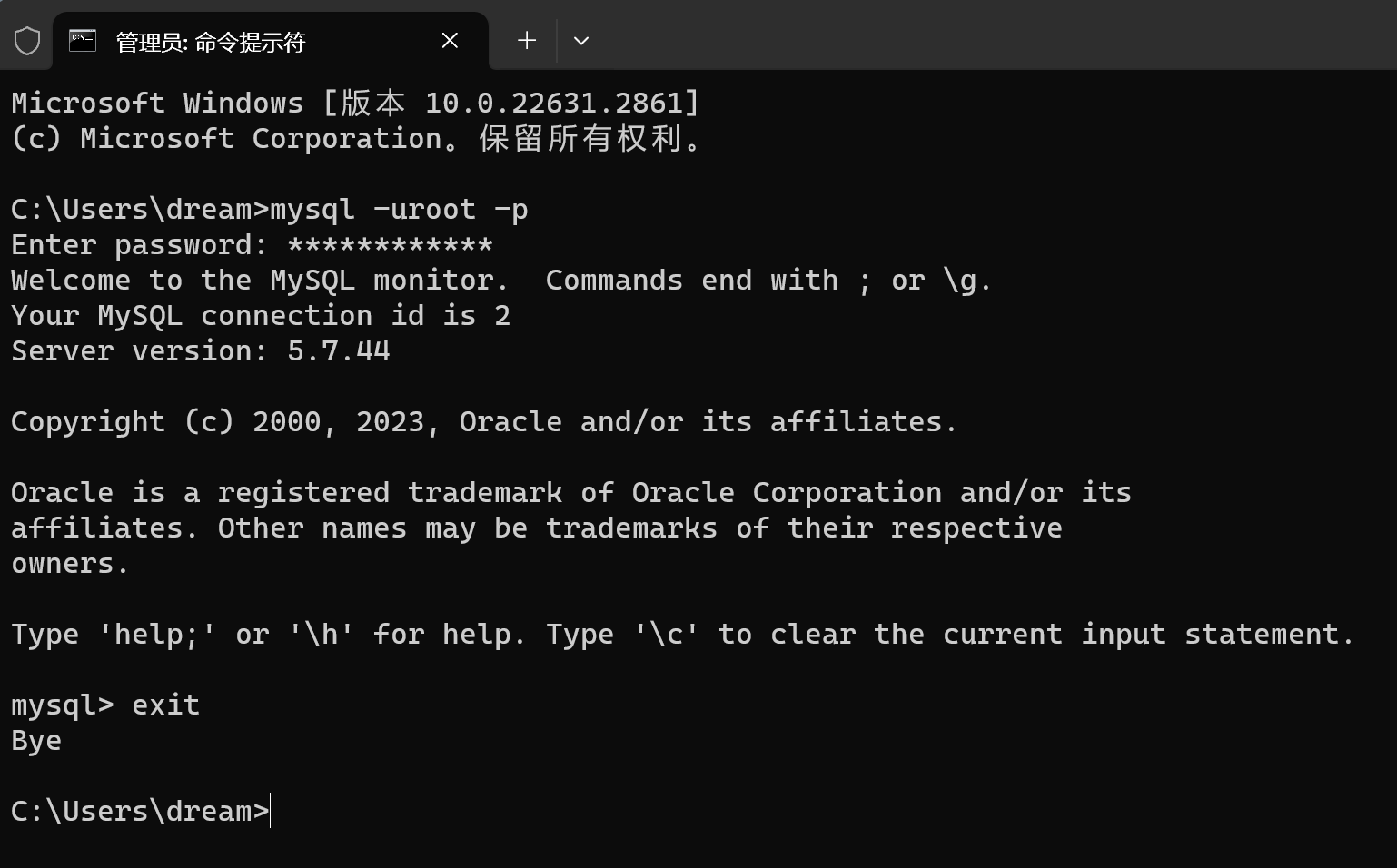
【2】修改用户名密码
- 前提是能正常进入到客户端内部
alter user 'root'@'localhost' identified by '123456';
flush privileges;-
参数介绍
- 'root' :就是要修改密码的用户名
- 'localhost' :表示允许用户在什么地址下可以使用密码登陆到数据库服务器,localhost表示本地登陆
- '123456' :就是新的密码了,注意,不要设置空密码!以后公司里面的密码一定要非常难记的才最好。
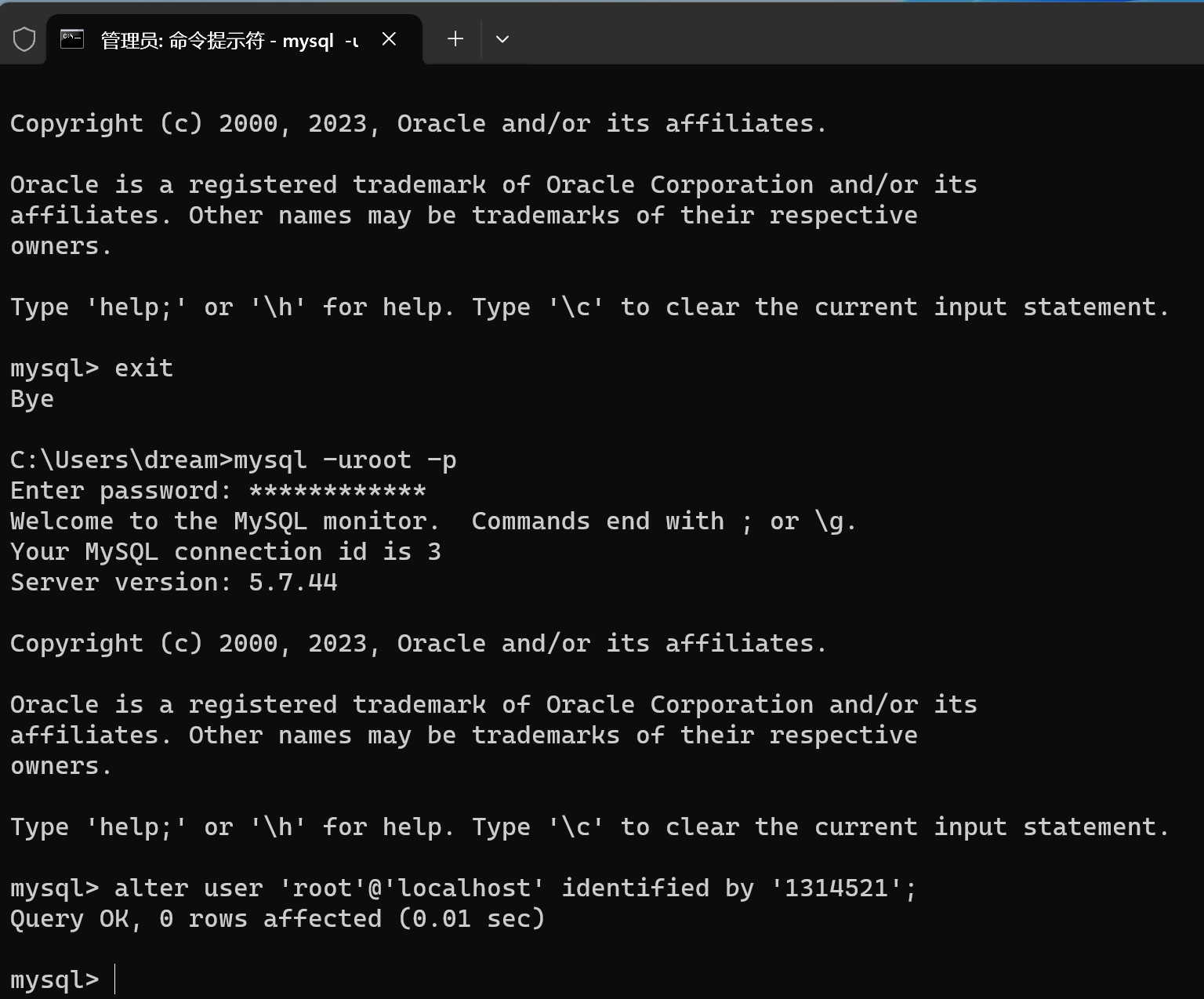
【3】跳过授权表重置密码
- 原理:将登录验证装饰器的校验功能取消
(1)关闭MySQL服务
net stop MySQL(2)跳过授权表
mysqld --skip-grant-tables(3)无密码登入
- 输入密码的位置直接 enter
mysql -uroot -p(4)修改当前用户密码
- 真正存储用户表的密码字段,存储的肯定是密文
- 只有用户自己知道明文是什么
- 密码比对只能比对密文
alter user 'root'@'localhost' identified by '1314521';(5)刷新权限数据
flush privileges;(6)重新进入MySQL
- 关闭当前服务,以正常方式登入数据库
【4】不需要输入密码直接登入
- 修改 配置文件 mysql.ini
- 在服务块内添加以下配置
[mysql]
# 不需要每次输入验证码即可登陆
user="root"
password=你的密码
default-character-set=utf8mb4




















 968
968











 被折叠的 条评论
为什么被折叠?
被折叠的 条评论
为什么被折叠?








